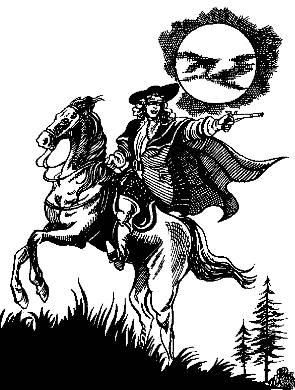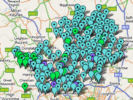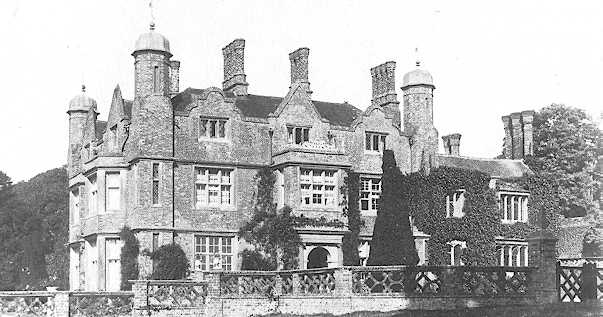|
|
Markyate Cell, Markyate |
|
 |
Merkyate Cell Hertfordshire
Gentlemans Magazine Vol XXVI November 1846
Picture drawn 1805
click on picture for larger image |
|
|
By bearing to the left presently I might reach, after half-anhour's stroll, the village of Markyate Street, once associated with a monk of whom we know a little from a curious Cottonian manuscript. But the clouds are lowering and I have far to go, so will keep straight on in my appointed course. My thoughts, however, are free to fly whither I please, so as I wind in and out among the beeches that have given this neighbourhood its name I may as well think of the monk Roger as of anybody else. There is a touch of the Platonic in the tale. Roger had once lived as a hermit in a cell near Dunstable and had given his days to fasting and to prayer in truly exemplary fashion. Christina, a lady from the neighbourhood of Huntingdon, was like minded, and Roger provided her with a retreat near his own. They were associated in deeds of piety and doubtless held one another in high esteem. Perhaps Roger wearied at length of such seclusion, or had heard much of the great monastery of St. Albans, for we read that he became a monk within its walls. One day he opened his mind to Abbot Geoffrey de Gorham touching a spot well suited to the requirements of a pious foundation, just to the north of Markyate Street. So the abbot built a priory at Markyate Cell for nuns of the Benedictine order, and their first prioress was the lady Christina. Their church, consecrated by Alexander, Bishop of Lincoln, was dedicated to the Holy Trinity in the Wood. For dame or maiden piously disposed there was then no retreat so safe as the nunnery. Without its walls were the world, the flesh and the devil. In the forest was the robber; in the castle, only too often, dwelt highhanded robbers too, knowing no law save that of the strong arm; they took what they could, and kept it so long as they were able. Roger the monk was buried in the abbey at St. Albans, beneath the south aisle of the baptistery, and an inscription was placed above his grave. Highways & Byways in Hertfordshire, 1902 See Wikipedia: Christina of Markyate |
||
|
Markyate Cell, from Markyate in Camera |
||
|
MARKYATE CELL, stands in a park 31 miles S.W. of Luton. It is a large house which has been almost completely rebuilt several times on account of fires, the date of the last rebuilding being 1840. The site was originally occupied by a nunnery founded early in the 12th century; after the suppression of the monasteries it was leased to Humphrey Bourchier, of the King's household, who converted the monastic buildings into a house in 1539-40; the old work remaining is probably of this period, and consists of the walls of the twostoreyed kitchen offices at the E. end of the house, and the lower part of a chimney stack. The walls are of flint with Totternhoe stone dressings; the N. wall of the scullery and the room over it is of flint and stone in alternate squares. The E. wall has been rebuilt and faced in the same manner, the stones used being fragments from the monastic church, with mouldings of 13th-century character. The N. window of the scullery is of two lights, with four-centred heads, divided by a moulded stone mullion; the kitchen window is similar, but of five lights, and over it is a square moulded hood with returned ends. The chimney stack projects from the E. wall of the kitchen, and in the lower part is a secret chamber, formerly reached by an opening in an upper room. The W. or inner wall of the scullery is 3 ft. 9 in. thick, and in it is a large arched opening, now built up on one side; the arch is low and pointed, and of three orders. Royal Commission on Historical Monuments - Hertfordshire, 1911 |
||
|
Lady Katherine Fanshaw (née Ferrers) (4 May 1634 – c. 13 June 1660), who lived at Markyate cell was, according to legend, a highwaywoman. See The Wicked Lady of Markyate Cell for the background of the legend, Wikipedia: Lady Katherine Ferrers. A modern version of the legend which fails to make it clear that it is an unsubstantiated myth. |
 |
|


